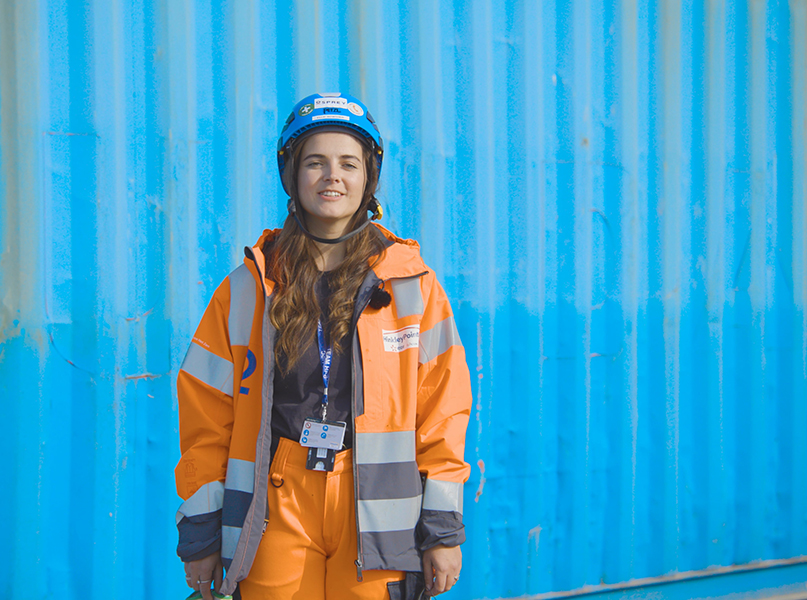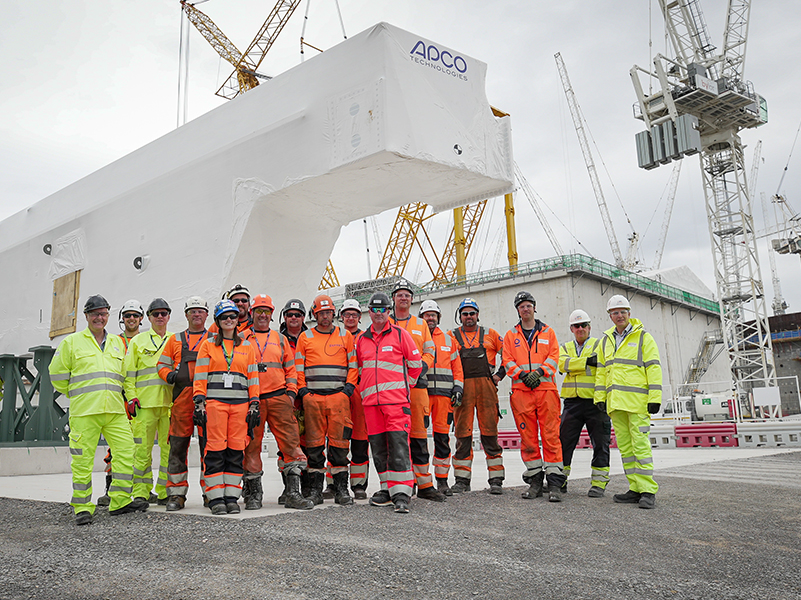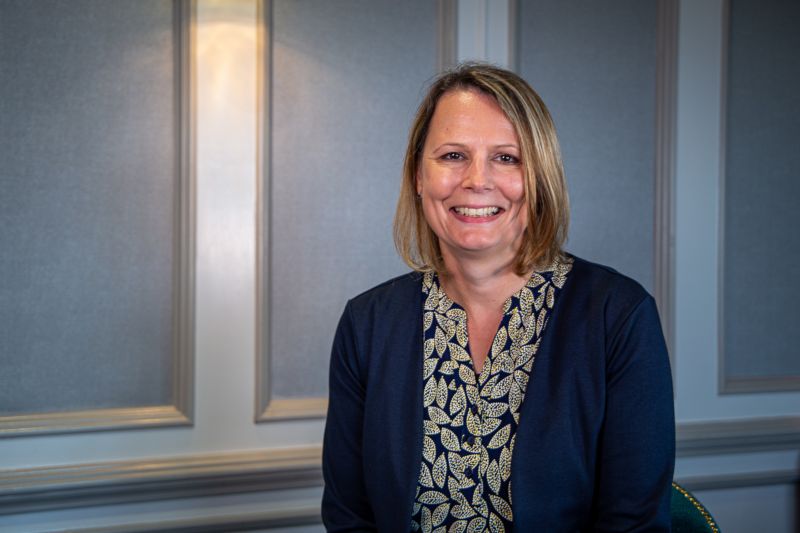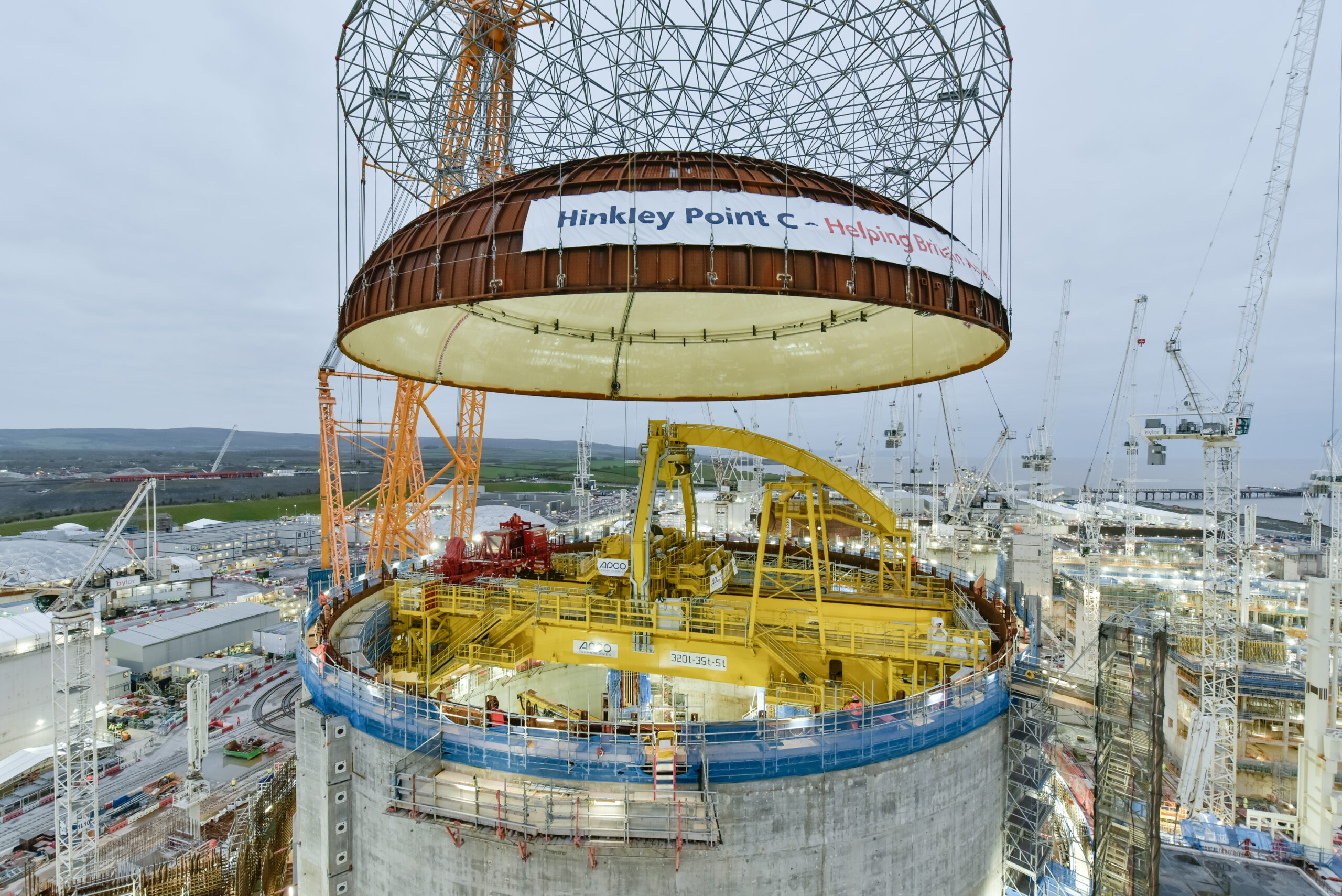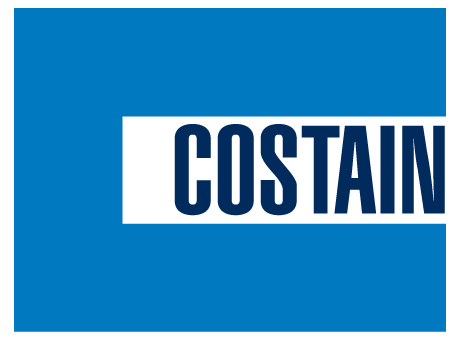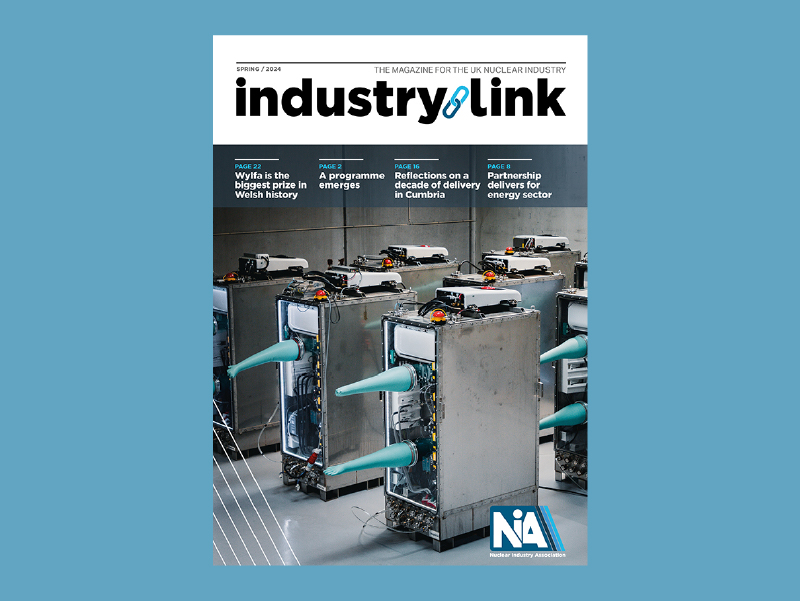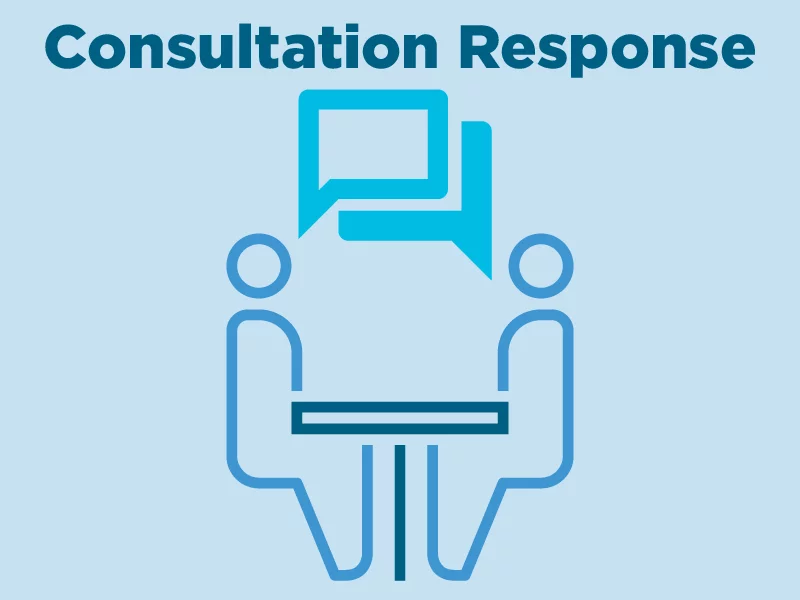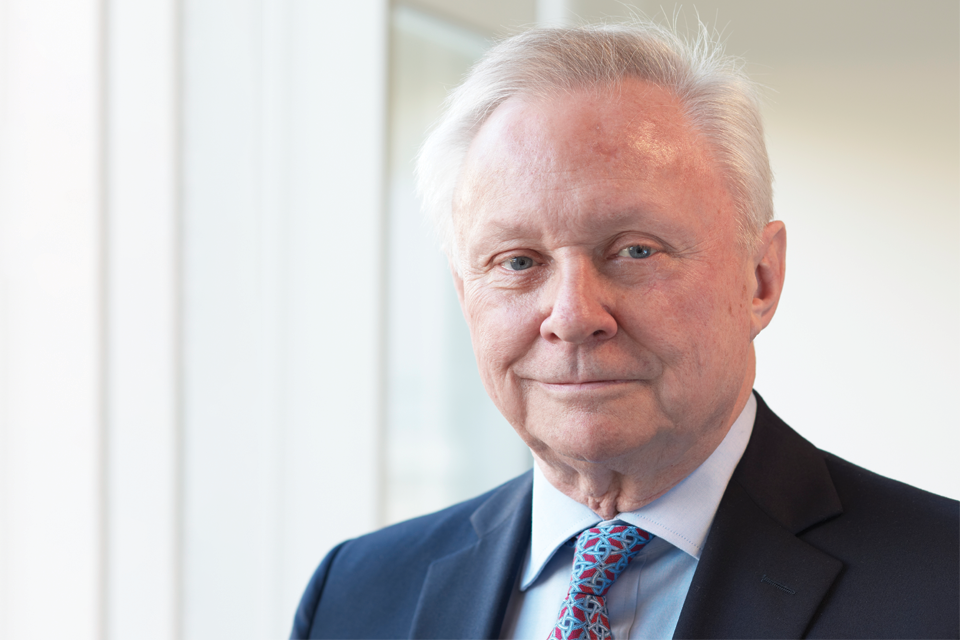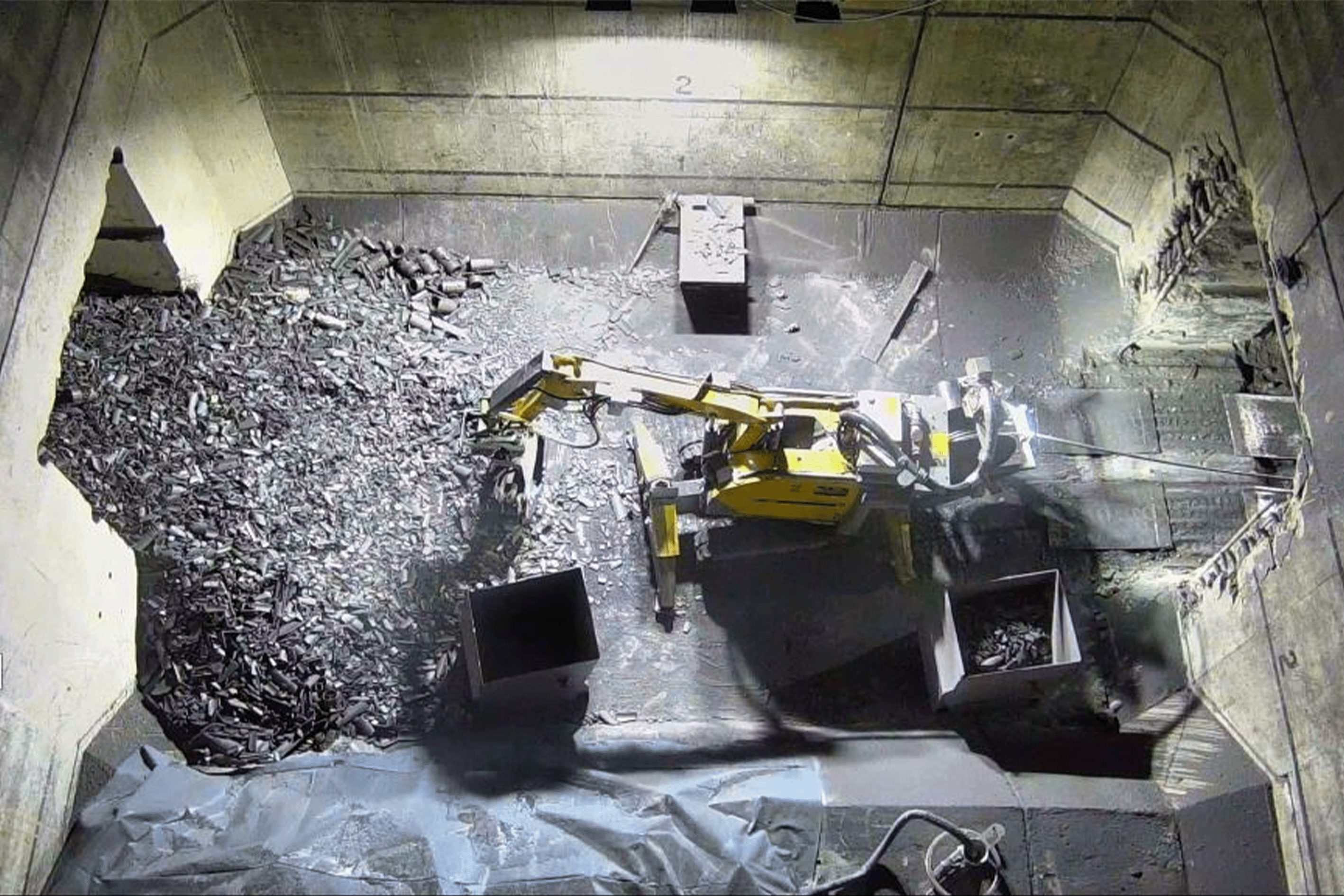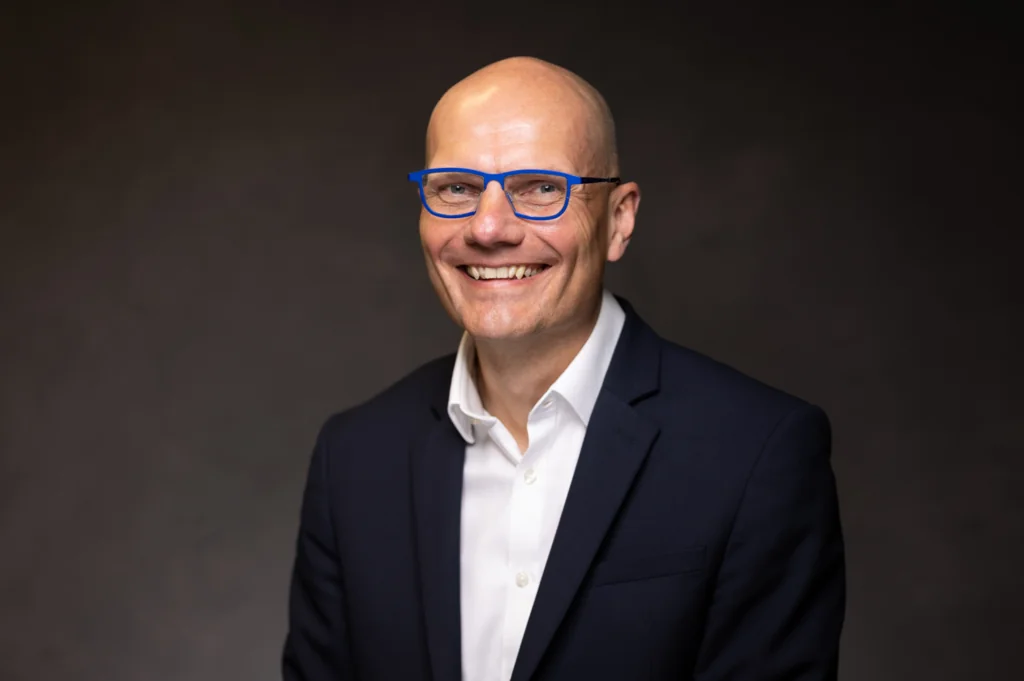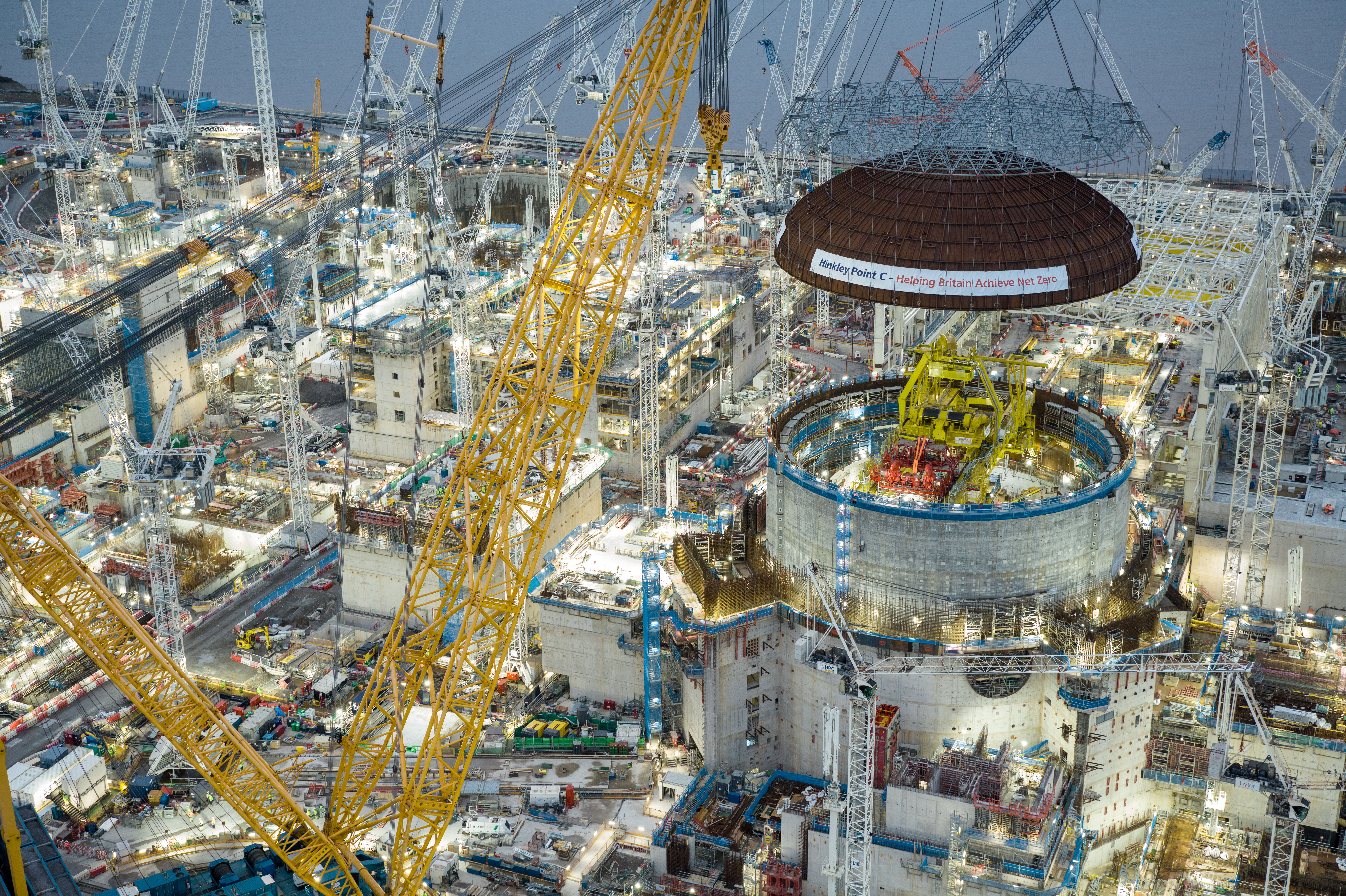It is said that with great power, comes great responsibility. This couldn’t be truer for Ellie Bowsher, Osprey’s Quality, Health and Safety, and Environment (QHSE) Officer – working with the team that enables specialist logistics’ movements for Hinkley Point C.
Every aspect of the role puts Ellie and the Osprey team at the heart of delivering nuclear success—enabling processes, empowering people to embrace continuous improvement through the delivery of critical assets.
It is a behemoth. As a critical asset, the Polar Crane Electrical Girder Beam A is 44.77 metres long and weighs 138,000 kilos—it’s a milestone component that needs moving to site with the greatest of care, at less than 3 miles per hour on a specialist, four-file ten-axle self-propelled modular transporter (SPMT).
While it’s tempting to say the Polar Crane Beam is priceless, it is certainly pivotal to the function and safety of the nuclear reactor and it’s not something you can easily buy off the shelf if you need another one. It will service the reactor during every second of its operational life—and during the construction phase, it plays a crucial role in installing the Reactor Pressure Vessel and steam generators. Every millimetre of this asset’s movement has been reviewed off by Ellie Bowsher and the team.
Ross Milne, Osprey’s Site Engineer on HPC:
“Safety is a key consideration for me when putting together these solutions; I regularly discuss activities with the QHSE team to ensure we maintain our high standards and expectations. We work across a variety of locations which pose different risks, and I can rely on Ellie for assistance and support at all times.”
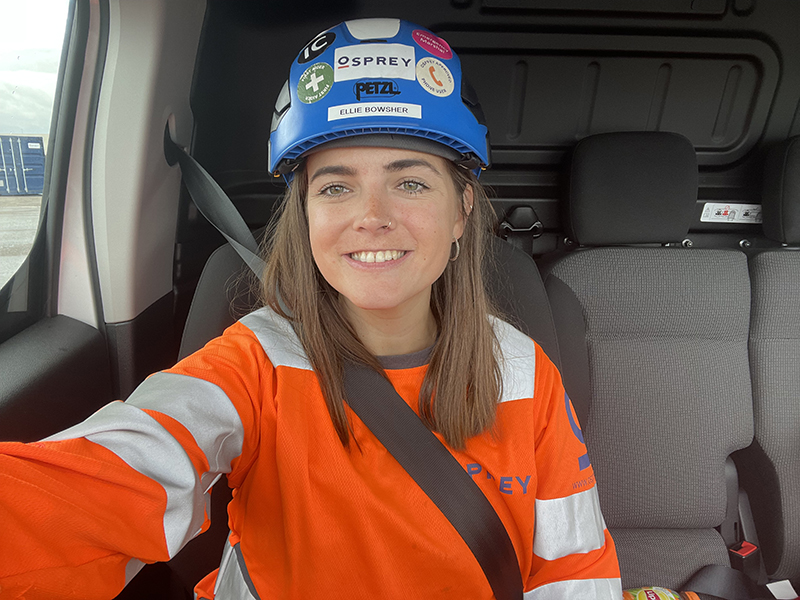
Ellie explains the magnitude of the work here. “Manufacturers cannot send components this large overland to Hinkley. We have to bring them in via our Shared Services operation, which combines vessels, barges, cranes, SPMT’s—all kinds of transport co-ordinating multiple deliveries of oversized assets from their points of origin. Our work starts as soon as we know we’re involved with the assets’ movements, but here on the ground, my job begins the moment our teams take delivery—just a second.” She is sitting in one of Osprey’s site escort vehicles, paying close attention to the smooth and orderly organisation of the specialist logistics going on around her. One of the contractors has stopped next to the vehicle to ask her opinion. She smiles and reassures him with an answer that speaks to bullet-point order and months of pre-delivery preparation. “Where was I? Oh yes. This Polar Crane Beam is a good example to explain what I do here, what we all have to do on site for QHSE.”
As Osprey’s QHSE Officer for HPC, Ellie is part of the team that ensures every aspect of the operations take place safely. It’s a multi-faceted, complex job but the aim is simple. Putting safety first with zero harm, with minimum exposure to risk, and total dedication to continuously learning from every aspect of the operation. It’s a safety paradox that should be adopted industry-wide—looking for opportunities to improve standards, systems and procedures constantly. Not just meeting QHSE criteria but looking for better ways to deliver exceptional operations.
Complex, but simple
Ellie ticks off the many aspects of this operation’s QHSE role on her fingers: unloading vessels safely, monitoring the effectiveness of closed roads, detailing the transportation of assets into specialist storage facilities; making sure an incoming barge can unload onto specialist transport safely, lash down, and transit that load safely to its destination on time.
Dean Graham, Osprey’s QHSE Manager, provides some background to the project:
“We’ve been working on the HPC project for the last 2 years; in this period our workload has expanded and the complexity of the projects we complete has increased which requires additional support and supervision in the world of QHSE. Ellie has slotted straight into our team and has strengthened the high standards that we have at Osprey; this ensures we can carry out complex movements in an everchanging environment where managing risk is key to a safe operation.”
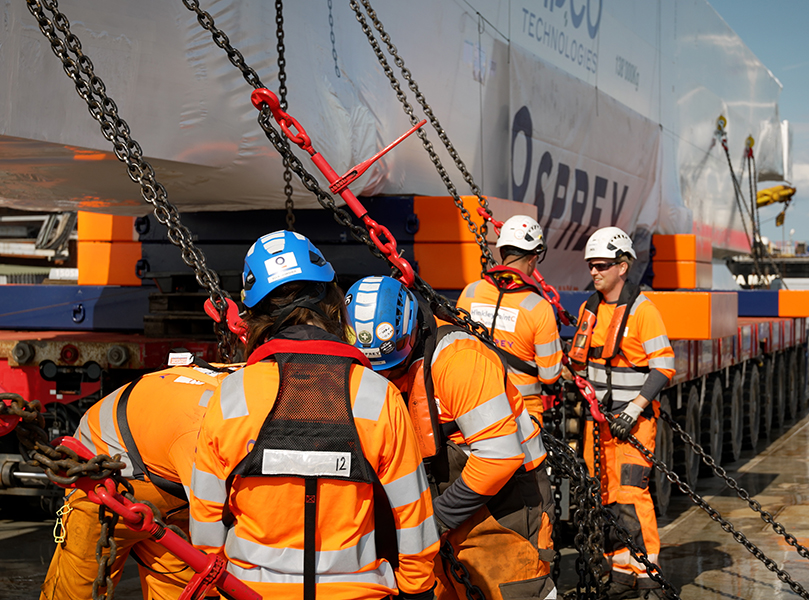
“Pre-planning for all of those movements starts a long time before we’re here on site,” says Ellie. “There’s nothing about QHSE that’s not complex, but the aim is still simple. Safety first with zero harm – every job is done safely no matter how urgent it is—but I’ve said that, haven’t I.” She smiles. “It’s interesting, because everyone we work with here knows that and really does understand how important it is. I work with project managers and engineers, for example, to ensure all of the lifting plans and risk assessments will meet the high standards we have here at Osprey and HPC – which is a regulation-focused construction site—and they all know, QHSE has the first and final word on how things will operate.”
Watching the Polar Crane Beam move slowly but safely forwards, Ellie points at the four-file ten-axled self-propelled modular transporter on which the valuable asset is sitting. “We have plans that show every inch of this road in detail. There are all kinds of factors in play—road conditions, weather – it’s a case of always expect the unexpected, really. If there’s anything that causes us concern while it’s moving, I have to have the confidence to say ‘stop’ if I need to—knowing there are huge implications for everyone directly concerned, and indirectly affected too.”
Crucial to success
None of the operations happen without QHSE sign-off. It’s a team effort, but Ellie can stop all operations in a heartbeat. It is the QHSE team’s responsibility to be the catalyst for ever-improving standards. Translating actions, quickly, into working practices that embrace diversity and nurture an open ethos towards continuous improvement. In short, it’s Ellie’s job to ensure everyone and every aspect of critical asset movement is safe.
“It’s a fact,” she says, her eyes still on the trailer, “that the nuclear industry—nuclear construction and engineering—is male dominated, and I know there are targets to increase gender diversity in the industry. But here on the ground, my gender simply doesn’t play a role in ensuring high quality operations. That’s as it should be.” The government commits to having 40% women in the civil nuclear sector by 2030, and Ellie acknowledges this as she goes on, “Women who want to come into this kind of work may find it’s a challenging role, I can’t deny that. But that’s not because you’re female, it’s because it’s varied, and technical, and constantly testing you to find better and better ways of working. The other side to this, is that I don’t feel like ‘a woman in nuclear’ and that’s a good thing. With the right team around you, gender just isn’t an issue. The industry bodies and organisations that I work with deserve recognition for that. It’s a milestone. It’s not a 9 to 5 job. But the important point here, is I feel safe. From stays in hotels, to running operations on tidal times, to working in the middle of the night as part of a team that, yes, is male-dominated, we can’t avoid that—I always feel safe. The culture has moved on, and the culture is now focussed on everyone being able to do the best job possible.”
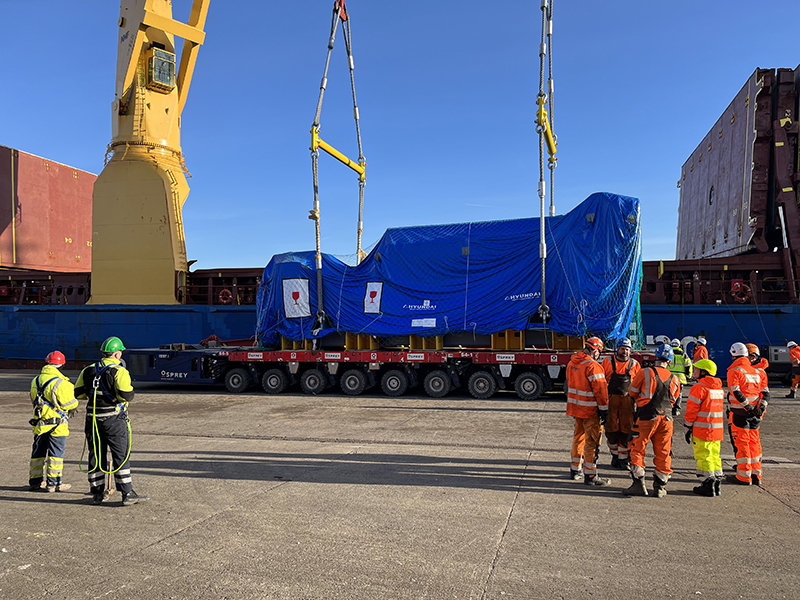
Every stakeholder in these operations looks to QHSE as the guiding force that enables the successful and safe completion of a move like this. It’s Ellie’s responsibility to factor in a sense-check on every aspect of risk to their plans. “Things like access to emergency exits and equipment, ground trip hazards, inclement weather, tie-down methods, fatigue – all of those things are a risk, and they have a cumulative impact on people, equipment, and processes.” This has to be balanced against the constant pressure of a cost-per-minute delay to any movement. “Nobody takes health and safety for granted. But the central point of responsibility makes it manageable, and it makes it a continuous learning process too, which I enjoy.”
“We plan for the best possible movement by organising every aspect of it in detail, but we’re actually looking for ways to improve our approach all of the time. We have a ‘Toolbox Talk’ before each phase of the movement starts, during which we talk through the known key hazards; the different risks; what we need to be aware of in our plans and how the moment in time may be affecting those arrangements. Weather, for example, is a huge variable in what we do in QHSE. But then, we also run a ‘lessons learnt’ and ‘project lookback’ session afterwards, where my job is to ensure everyone’s voice is valued and heard, and all of the observations are gathered and evaluated for the next movement, and the one after that, and the one after that. It’s not just my eyes on site, it’s everyone’s responsibility to prioritise safety – ” Ellie is frank: “My job is to ensure QHSE is spot on. That’s it. So we ask what went well, what can we do better? How can we improve on what we just did, and which things we’d like to change. It’s a continual loop of learning. We’re proud of it.”
Continuous improvement
Ellie recaps and emphasises: “The continuous improvement approach makes sense. It has to, as we’re all focussed on ways to work smarter and safer, which, eventually, will bring down the costs of construction and benefit us all. Like many of our clients though, HPC prioritises the highest standards. This is a very regulated environment, with good reason. But while those standards guide us in everything we do, we are also open to change – to improvement, which we can then share. As an example, we follow the industry standards for working at height but in our experience, that’s not enough. So we work at a better standard than that. The same applies when we see ways to improve lashings, or movements across a site, or a heavy lift, or any part of our operation really.”
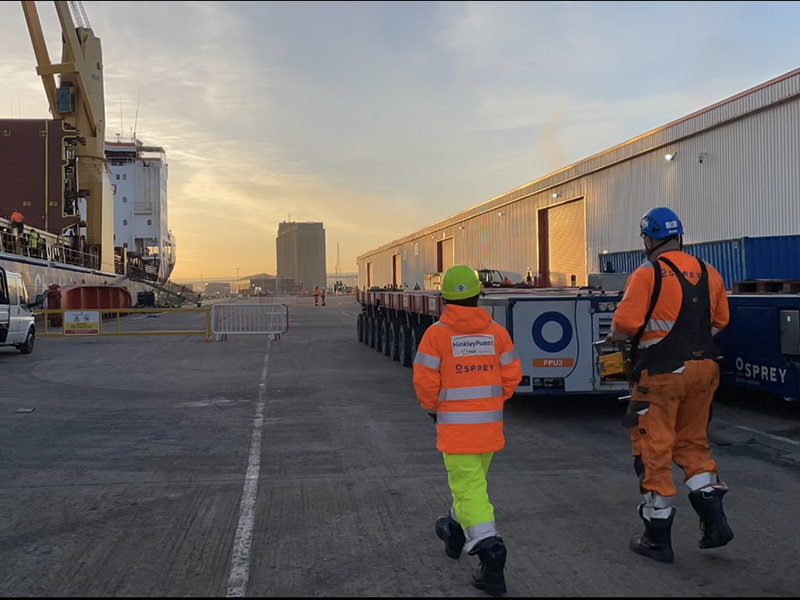
In this respect, Ellie’s role extends beyond the scope of critical asset transportation. “QHSE affects all aspects of what we do. When we built a temporary habitat at Avonmouth around the EDG Gensets, for example, because they needed to be at a specific humidity and temperature, QHSE considerations were at the heart of that construction. Every part of it. Everything, from being the principal contractor working under CDM Regulations, inducting the construction teams that were coming on site to build it, to ensuring the emergency exits for the habitat itself were put in the optimum position. Risk assessments, method statements, scheduling – there isn’t a single part of an operation here that doesn’t benefit from our team’s non-stop focus on QHSE. That’s my job. I love it.”
